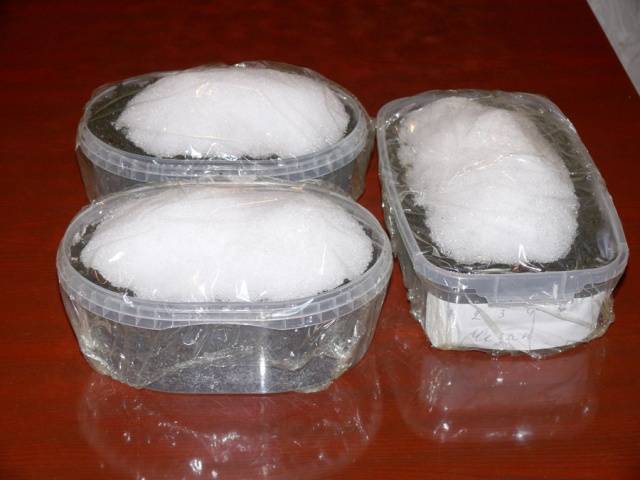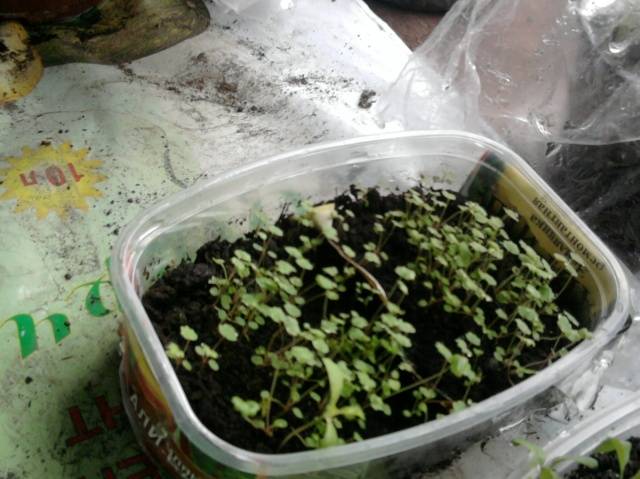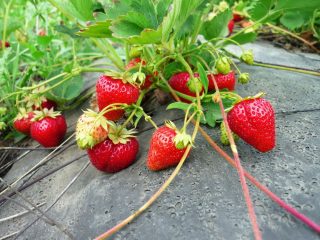Content
Probably every summer resident is familiar with strawberries - everyone loves this berry, which is why they try to plant at least a few bushes on their plot. It would seem that there is nothing complicated in growing strawberries: everyone knows that garden crops are propagated by mustaches or by dividing the bush. However, it is not always possible to use these methods of propagating garden strawberries (they are also often called strawberries); sometimes you have to go the other way - to increase the number of bushes with seeds.
Is it possible to growing strawberries from seeds at home, what growing secrets exist, how to care for seedlings, and what are the difficulties of this method - this is what this article is about.
How to grow strawberries from seeds at home
The method of growing strawberries from seeds has always been considered very difficult and time-consuming. Of course, it is much easier to simply root the mustache or divide the strong kuta into several parts, but this is not always possible. Buying seedlings from a nursery is quite expensive, especially if the gardener wants to plant a large area with strawberries.
In this case, you can try to grow strawberry seedlings yourself using the seeds of this crop. Seeds can also be bought, but when the strawberry variety is elite, they will be expensive and are sold in 5-10 pieces per bag. As you know, the germination rate of strawberry seeds is low, so half of the purchased material may simply go to waste.
For everything to work out, you need to follow technology. You can familiarize yourself with it in this article, and see a clear example in the video instructions from experienced gardeners.
To do this, leave the largest and most beautiful berries on the bushes and let them overripe a little. Then remove the skin with a knife along with the seeds and carefully separate the seeds under water. The seeds are dried on a cloth and stored for 3-4 years.
Which strawberries are propagated by seeds?
A novice gardener should know that Not all varieties of strawberries and wild strawberries can be propagated by seeds. Hybrid varieties are absolutely not suitable for this method. Such strawberries may have seeds, they may even germinate and produce good seedlings, but there is no guarantee as to what the fruits will be like and their taste characteristics.
Elite expensive varieties of large-fruited or exotic strawberries (unusual color, shape, with a taste or aroma not typical for this berry) are difficult to propagate, It is especially difficult to increase the number of such bushes through seeds. The seeds do not germinate well, the seedlings are weak and non-viable.
And here remontant small-fruited varieties, which are often called strawberries, on the contrary, reproduce well by seeds.
Cross-pollination with other varieties should not be allowed, otherwise the purity of the variety will be compromised, and one can only guess about the quality of the seedlings.
Growing from seeds will be more effective if you choose one of the following varieties of strawberries:
- "Diamant" is characterized by resistance to viruses and pests, as well as high yield (up to two kilograms per bush);
- "Dukat" is not afraid of spring frosts and also produces good yields;
- "Olivia" is not so productive, but is not afraid of drought and heat;
- the “Bagota” variety is a late-ripening variety, the strawberries are large and sweet;
- Lakomka, on the contrary, has an early harvest;
- strawberries "Sakhalinskaya" bear fruit all season long and are characterized by increased resistance;
- "Geneva" is one of the large-fruited varieties that can reproduce by seeds.
When to plant strawberries for seedlings
In order for the seedlings to grow and be ready for planting in open ground, at least two months must pass from the moment of sowing the seeds.. If strawberries in most of Russia are usually planted at the end of May or early June, and also taking into account the 2-3 weeks allocated for seed stratification, it is possible to determine The optimal time for sowing seeds is the end of February or the beginning of March.
Later crops will not have time to get stronger; they will have to be planted in the ground later, when the heat has already set in. If you plan to grow strawberries in a greenhouse, you can sow the seeds earlier, starting in January.
Preparing seeds for planting
Summer residents who are interested in the question of how to grow strawberries from seeds should understand that this is a difficult process that requires care and time. But seedlings grown independently will make it possible to increase the number of strawberry bushes on the site without extra costs.
First of all, strawberry seeds should be prepared for planting. This process can be roughly divided into three stages:
- Soak. At this stage, strawberry seeds are placed on cotton pads or cotton cloth. It is recommended to moisten the seeds only with melt or rain water, then growth stimulation will be stronger, the seeds will germinate faster, and the seedlings will be strong and of high quality.
- Germination. Moistened cotton pads or cloth with swollen seeds are covered with another layer (discs or cotton cloth) and thoroughly moistened. It is very convenient to germinate strawberry seeds in a plastic container with a lid. You just need to make small holes in the lid with a needle to allow air access to the seeds. Place the covered container in a warm place for a couple of days (temperature 20-22 degrees). During this time, small sprouts should appear.
- Stratification. One of the country tricks for growing strawberries from seeds is keeping the already hatched seeds in low temperature conditions. This will help harden the seedlings, because strawberry seedlings are very fragile and weak, they often die. For stratification, the container with hatched seeds and a moistened substrate is placed in the refrigerator.It is necessary to constantly monitor the condition of the seeds and the level of humidity; if necessary, add water - the cotton pads should not dry out. Stratification usually lasts two weeks; if necessary, this period can be extended, but for a maximum of a month.
After this preparation, the strawberry seeds are ready for planting in the ground.
Sowing strawberry seeds for seedlings
Containers for strawberry seedlings are chosen to be shallow but voluminous. Various pallets, food plastic containers or specially knocked down wooden boxes are well suited for these purposes - seedlings will feel best in such containers and the roots will develop correctly.
The soil for strawberry seedlings can be anything. The only requirement is that the soil must be crumbly in order to be well saturated with oxygen. You should not choose too nutritious soil for strawberries; it is better to take ordinary garden soil and mix it with peat, turf or forest soil and part of the river sand. A few weeks before sowing, it is recommended to bake the soil in the oven for 20-30 minutes.
The earth is poured into containers and compacted tightly. Make shallow grooves at a distance of 5-6 cm from each other. Wet the soil with a spray bottle and lay out the hatched seeds at intervals of 2 cm. There is no need to cover strawberry seeds with soil; sunlight is enough for them to take root.
If there is such a possibility, the containers are not completely filled with soil (2-3 cm is left to the top edge), the remaining space is filled with well-compacted snow. Place the hatched seeds on the snow and press them in a little. Over time, the snow will melt, and the strawberry seeds will press tightly to the ground.
All the time until a pair of true leaves appear on the seedlings, containers or trays with strawberries should be covered with a transparent lid, glass or film. This will create a special microclimate inside and also helps retain moisture.
Assessing the degree of soil moisture is quite simple: if there are drops of condensation on the lid, the strawberries have enough water. If the lid is dry, it’s time to water the seedlings with a spray bottle. When there are too many drops and you can’t even see the seedlings through the lid, you need to remove excess moisture with a cloth and open the container for ventilation.
Caring for strawberry seedlings at this stage consists only of watering and ventilation. You need to ventilate containers with strawberries carefully: gradually increasing the time. First, a larger hole is made in the lid, then the lid is moved a little, only after such preparation the seedlings are left open. First for a few minutes, then for a day, and finally leave the strawberries all night.
Picking strawberry seedlings
Strawberry seedlings need to be plucked only if the seeds were sown in common containers. When individual cups or peat tablets are used, diving can be avoided. But, due to the fact that the germination rate of strawberry seeds is low, they are often sown in common containers, and then I pick out the strongest plants.
By this stage, the strawberry seedlings should have at least four true leaves. You can pick seedlings with a match, a thin stick or tweezers. First, the soil is thoroughly moistened with a spray bottle. Prepare individual containers, filling them with the same soil as that used for sowing the seeds.
A small depression is made in the ground and the seedling is carefully transported along with the earthen lump.Lightly compact the soil around the stem and water the plants. After diving, you need to water the seedlings at the root; you can no longer use a spray bottle - water should not get on the strawberry leaves.
This will allow the development of a superficial root system, and subsequently the seedlings will take root better and grow stronger faster.
All that remains is to wait for the strawberry seedlings to grow up, for warm weather to arrive, and you can transfer the seedlings into the ground.
You can learn more about this from the video:
Growing strawberries from seeds in peat tablets
Many gardeners prefer to grow strawberry seedlings in peat tablets. Not all crops love peat, but strawberries are among the fans of such a substrate.
First, the tablets are placed in a flat tray and filled with warm water - they should swell and increase in size. After this, you can plant the hatched and stratified seeds as usual (the method was described above).
But there is another way: place swollen strawberry seeds in a peat tablet, cover the container with a lid and place it in the refrigerator. After stratification, the container with peat tablets is placed in a warm place with a constant temperature of 20 degrees.
How to grow strawberry seedlings from seeds correctly
There are some secrets that help gardeners propagate their favorite strawberries by seeds:
- You also need to gradually accustom strawberry seedlings to the sun. First, the containers are placed in a bright place, but not in direct sunlight. As the seedlings grow, their time in the sun increases. After the dive you can leave strawberries on the windowsill.
- If the roots of the seedlings are visible, you need to carefully sprinkle them with earth, as if hilling up strawberries. If this is not done, the plants will lie down and disappear.
- Mold may appear on the ground. In this case, the mold is removed with a match along with a thin layer of soil, and the container with strawberries is ventilated more often, and the level of soil moisture is carefully monitored.
- Before planting in a permanent place, strawberry seedlings need to be hardened off. They do this as usual, gradually increasing the time of the “sessions”.
- Drip watering from a spray bottle is useful for seeds, but when green leaves appear, strawberries are watered only under the root. It is convenient to do this with a teaspoon. Condensation from the lid of the container must be wiped regularly to prevent drops from falling on the delicate strawberry leaves.
- In order for strawberries to develop normally and the bushes to become strong, in the first year after planting the seedlings, all flower stalks and tendrils should be removed.
Simple rules will help you grow healthy strawberry seedlings in ordinary home conditions. Growing from seeds can be an excellent alternative to propagating strawberries by planting or dividing the bush. The first failures should not stop gardeners - painstaking work will ultimately yield results in the form of strong seedlings of the desired variety.
Another video about germinating strawberry seeds will help a novice gardener:























